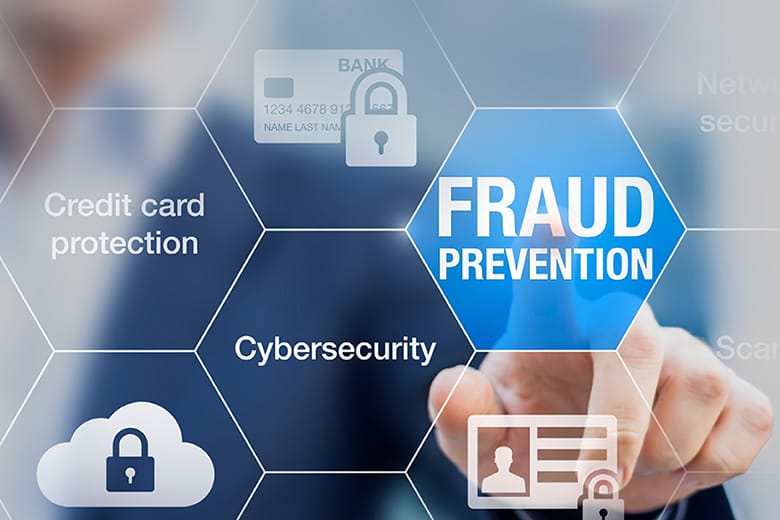Financial institutions must prioritize data breach prevention by implementing security measures to safeguard customer information. In today’s digital age, where hackers have become more sophisticated, financial institutions must constantly review and update their security strategies to stay ahead of potential threats.
As financial institutions increasingly rely on digital platforms to provide services, cybercrime becomes a growing concern. Cybercriminals target financial institutions because they house sensitive customer information that can be used for fraudulent activities. According to a study by ibm, the average cost of a data breach for a financial institution is $5.
85 million, excluding the loss of business and damage to reputation. Therefore, financial institutions must have robust security measures that prevent data breaches, such as access controls, encryption, employee training, and regular audits. In this article, we’ll discuss the steps financial institutions can take to secure customer information and prevent data breaches.

Credit: www.irisidentityprotection.com
Data Breach Prevention Strategies For Financial Institutions
As financial institutions continue to embrace technological advancements, the risk of a data breach also increases. A data breach can be catastrophic for both the institution and its customers. So, it is crucial for financial institutions to implement robust data breach prevention strategies.
Implementing Sufficient Data Security Measures
Ensuring that data security measures are in place can help prevent a data breach. Here are some key measures:
- Encryption technologies: Encrypting sensitive information such as customer data and intellectual property can prevent unauthorized access.
- Network security: Using firewalls, intrusion detection systems, and secure access protocols are ways to prevent cyber attacks.
- Password policy: Implementing an effective password policy can reduce the risk of cyber attacks. Requiring complex passwords, two-factor authentication, and frequent updates are ways to enforce a strong password policy.
Training Employees On Data Security Best Practices
Employees play a significant role in data breach prevention. It is essential to educate them about data security best practices to minimize the risk of a data breach. Here are some key tactics:
- Conduct regular training: Training sessions for employees on data security best practices such as recognizing phishing attacks can be highly effective.
- Maintain awareness: Posters, newsletters, and regular reminders can keep employees alert to potential data security threats.
- Monitor and encourage: Regularly monitoring employee performance and encouraging good practices can go a long way in preventing a data breach.
Monitoring For Suspicious Activity
Monitoring for suspicious activity can help detect cybersecurity threats before they escalate. Here are some key practices:
- Network monitoring: Actively monitor the institution’s network for signs of suspicious activity such as unauthorized access attempts.
- Real-time alerts: Implement alerts for suspicious activity, such as unusual data access requests or sudden changes in network traffic.
- Regular audits: Regular audits of data access logs can help detect suspicious activity and prevent a data breach.
Keeping Up With Regulatory Compliance
Regulatory requirements are constantly evolving, and it is essential for financial institutions to keep up with them. Here are some key practices:
- Regular assessments: Conduct regular assessments to ensure compliance with regulations such as the general data protection regulation (gdpr) and payment card industry data security standard (pci dss).
- Secure data storage: Financial institutions should make sure they store data securely according to regulatory requirements.
- Legal counsel: Involving legal experts can ensure that compliance measures are up-to-date and that requirements are met.
Implementing data breach prevention strategies is essential for financial institutions to safeguard against data breaches. By implementing a combination of data security measures, employee training, monitoring, and regulatory compliance, financial institutions can minimize cybersecurity threats and prevent data breaches from occurring.
Responding To A Data Breach
Understanding The Stages Of A Data Breach
A data breach occurs when cybercriminals gain access to a financial institution’s confidential information or computer system. The following are the typical stages of a data breach that a financial institution must be aware of:
- Stage 1: Reconnaissance – this is the stage where the attacker scans the system’s vulnerability and the institution’s network. The attack usually begins with social engineering scams, such as phishing emails.
- Stage 2: Penetration – in this stage, the attacker uses the vulnerabilities in the financial institution’s security system to exploit it. A successful exploit allows the attacker to gain access to the institution’s entire network.
- Stage 3: Expansion – once the attacker gains access, he expands his control over the network and the target system. The attacker could use various techniques to extract sensitive data and network resources.
- Stage 4: Exfiltration – this is the final stage, where the attacker uses exporting tools to extract sensitive and confidential data from the institution’s network.
Developing An Incident Response Plan
The key to successful incident management is preparation. A financial institution needs to have an incident response plan (irp). Here are some key elements of an effective irp:
- Establish an incident response team: The institution should establish a formal team responsible for incident response. This team should be trained, equipped and up-to-date on incident response procedures.
- Define the scope: It is essential to define the scope of the incident for clear and effective communication.
- Detect and report the incident: Once the incident is detected, it should be reported immediately to all designated personnel.
- Containment and eradication: The irp should outline how the institution will contain the breach and eradicate all instances of compromise.
- Recovery: Once the breach is contained and eradicated, the institution should begin the process of recovery. The irp should outline recovery actions and procedures.
- Post-incident activities: The institution should review the incident, perform an analysis of the attack, and document any lessons learned.
Minimizing The Damages Of A Breach
Financial institutions must adopt several measures to minimize the damages of a data breach. Here are some essential steps:
- Have a backup system: A backup system can help an institution to bypass a ransomware attack by restoring an unaffected version of data.
- Keep systems updated: Regular maintenance and updating of systems, patches, antivirus software and firewalls can help prevent intrusions.
- Employ multi-factor authentication: By employing multi-factor authentication, financial institutions can prevent unauthorized access to their network and sensitive data.
- Educate employees: It is essential to educate employees about the importance of security protocols and guidelines. Cybersecurity awareness training can help towards this objective.
- Conduct frequent audits and assessments: By conducting frequent audits and assessments of the institution’s systems, financial institutions can identify potential vulnerabilities and find areas of improvement before they become a cause for concern.
Financial institutions should establish a robust response plan to prevent and respond to data breaches effectively. Timely detection, reporting, and response are keys to minimizing damage and restoring normalcy. By incorporating preventive measures and proactive measures, financial institutions can help protect customers and their sensitive data.
Frequently Asked Questions Of Data Breach Prevention For Financial Institutions: Securing Customer Information
What Is A Data Breach?
A data breach is the unauthorized access to sensitive information that is stored electronically.
How Can Financial Institutions Prevent Data Breaches?
By implementing multi-factor authentication, encryption, regular staff training, and conducting security audits.
What Are The Consequences Of A Data Breach For Financial Institutions?
Financial institutions can face legal and financial penalties, loss of customer trust, and damage to their reputation.
Conclusion
Protecting customer information from data breaches is a top priority for financial institutions. With the increasing prevalence and sophistication of cyber threats, securing sensitive data has become more challenging than ever before. However, by implementing the necessary preventive measures, financial institutions can significantly reduce the risk of data breaches and protect their clients’ information.
Some of these measures include regular security assessments, employee training, implementing the latest security technologies, and monitoring data access and usage. By taking these proactive steps, financial institutions can establish a culture of security and safeguard their customers’ data from the potential damages and costs of a data breach.
Moreover, placing adequate emphasis on data security can also enhance customer trust and loyalty, which are critical drivers of success in the competitive financial industry. Ultimately, preventing data breaches is not just a regulatory requirement but also a crucial part of maintaining a reputable and trustworthy financial institution.

